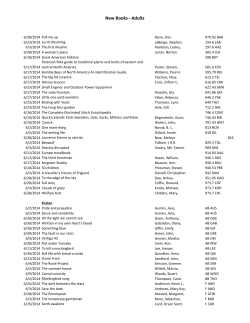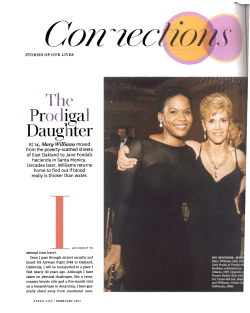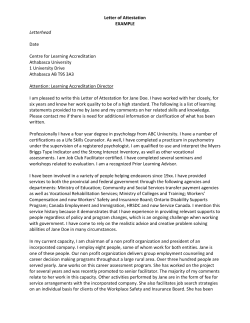
Document 389569
⦿ Prompt: Discuss the archetypes present in the novel and how they represent the characters, the journey, and symbolic nature of the novel. How are archetypes are used as the building blocks for Jane’s journey in the novel. ⦿ Many characters, relationships, and story elements are elevated from their basic archetype, or have some kind of deviation from the normal archetype. ⦿ The relationship between Jane and Rochester would fall under the star crossed lover archetype, but unlike most examples of this archetype, they eventually get a happy ending. ⦿ “…and him who thus loved me I absolutely worshipped: and I must renounce love and idol.” (Bronte 341) ⦿ Jane falls under the orphan archetype; and like most members of this archetype, Jane carries with her a feeling of abandonment and craves love and affection from others. However, unlike many orphans who are usually melancholy, reserved, and dependent on the acceptance of others, Jane has a fiery and uncompromising spirit which allows her to accept her difficult situation and actually become more independent because of it. ⦿ “The more solitary, the more friendless, the more unsustained I am, the more I will respect myself.” (Bronte 342) ⦿ ⦿ The quest is a journey or trial a hero must undertake in order to find some object or achieve some goal. Usually the quest is a difficult sort of adventure which tests the hero in many different ways and forces them to adapt or grow in order to fulfill their goal. ⦿ ⦿ ⦿ The main quest in Jane Eyre is Jane’s search for love, a sense of importance, and independence. Along the way, Jane develops her sense of morals and has to make some difficult decisions to stay true to her morals. A pivotal moment along Jane’s quest was when she left Rochester after discovering he was already married. Even though her marriage to him would have fulfilled her quest, she forgoes it because along her journey, she learned how important it was to stay true to her own morals. Only once Jane achieves independence and truly understands what she wants in life does she marry Rochester. This archetype is about the loss of innocence due to a significantly impactful even in a character’s life. ⦿ The character loses their more innocent and naïve perspective on life, developing a more experienced, possibly cynical, outlook. ⦿ Essentially it is growing up or a coming of age by being more aware and facing the reality of things. ⦿ This archetype is common in fiction, pop culture, and realism. ⦿ ⦿ ⦿ ⦿ ⦿ A serious impactful pivotal moment that greatly affected Jane Eyre was the death of Helen Burns during her time at Lowood. Helen was her first friend there, and she had the virtue of being very forgiving and patient. Helen’s death got rid of Jane’s naiveté and instilled Helen’s virtues into Jane and a more mature perspective on life. “fifteen years after her death [the grave] was only covered by a grassy mound; but now a gray marble tablet marks the spot, scribed with her name, and the word ‘Resurgam’”. (Bronte 75) • • • • • The mother archetype stems from “Mother Nature,” a personification of nature that has been around since the goddesses of agricultural bounty of the Mesopotamians and even before that. A mother archetype is seen as bigger than life and beyond mortal faults. Mother Archetypes usually expose the protagonist to some of his/her only tender moments and fond memories. Mother figures also give wise advise to the protagonist and help him/her through hard times. Mother figures in Jane Eyre are Bessie (at Gateshead), and Miss Temple (at Lowood). • A pivotal moment that exemplifies the characteristics of a mother archetype was when Miss Temple believed Jane’s story of her childhood and cleared Mrs. Reed’s accusations against her. ● “I resolved, in the depth of my heart, that I would be most moderate … I told her all the story of my sad childhood… Thus restrained and simplified, it sounded more credible: I felt as I went on that Miss Temple fully believed me” (Bronte 63). • Miss Temple is shown as being above the lies of Mrs. Reed and her faith in Jane encourages Jane to go on to become a teacher, and later a governess. Her attention calms Jane and helps her to better control her fervent emotions. ● ● ● The villain archetype acts in evil in order to stop the hero, or main character from reaching their quest or destiny. Villains usually represent sin, greed, or wrath. They face death, ironically brought by their own flaws. ● A pivotal moment that shows the cruel and unjustly decisions of Mrs. Reed, the villain, was when she locked Jane in the red room causing Jane to grow her anger towards the Reed’s and it makes her finally see how harshly they mistreated her. ● “Silence! This violence is all most repulsive:" and so, no doubt, she felt it. I was a precocious actress in her eyes; she sincerely looked on me as a compound of virulent passions, mean spirit, and dangerous duplicity.” (Bronte 13) ● Mrs. Reed basically deprives Jane of love, care, family, and fortune for selfish reasons. Her hatred towards Jane increases as Jane finally has the courage to stand up for herself when she is about to leave for Lowood. ⦿ ⦿ ⦿ ⦿ ⦿ ⦿ ⦿ ⦿ http://www.bbc.co.uk/schools/gcsebitesize/english_literature/images/jane_eyre_reed.jpg http://www.muhsd.k12.ca.us/cms/lib5/CA01001051/Centricity/Domain/520/English%203/Unit%20 1%20--%20Early%20American%20Lit/ArchetypesandSymbols.pdf http://kelleysherojourney.wordpress.com/2012/01/27/the-orphan-archetype/ http://storify.com/LEYANNIE/jane-eyre-by-charlotte-bronte-archetypes http://answers.yahoo.com/question/index?qid=20090731121245AAxxq2j http://www.iofilm.co.uk/pix/features/lord_of_the_rings_the_fellowship_of_the_rings_2.jpg http://img.gawkerassets.com/img/18gs2gxwzx49zjpg/original.jpg http://www.celebritytypes.com/misc_pictures/carl-jung.jpg
© Copyright 2025












